Episode 149 Show Notes
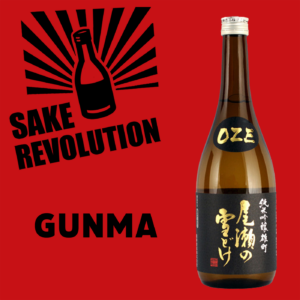 Episode 149. This week we return to another fun and sake-rich prefecture: Gunma! This area is home to onsens, national parks, record breaking tunnels and some pretty darn good sake. After we first touched on this region in episode 8, we thought it deserved another visit and a bit more exploration of their food, culture and traditions. We’ll taste a much loved sake from Ryujin Shuzo, makers of the Oze no Yukidoke brand. This sake features the much beloved Omachi sake rice and snow melt water from the oze plain that springs from a well guarded by a dragon! It’s a delightful brew that will have us returning to Gunma again and again in our glass! Keep an eye out for more prefecture profiles soon!
Episode 149. This week we return to another fun and sake-rich prefecture: Gunma! This area is home to onsens, national parks, record breaking tunnels and some pretty darn good sake. After we first touched on this region in episode 8, we thought it deserved another visit and a bit more exploration of their food, culture and traditions. We’ll taste a much loved sake from Ryujin Shuzo, makers of the Oze no Yukidoke brand. This sake features the much beloved Omachi sake rice and snow melt water from the oze plain that springs from a well guarded by a dragon! It’s a delightful brew that will have us returning to Gunma again and again in our glass! Keep an eye out for more prefecture profiles soon!
#sakerevolution
Skip to: 00:19 Hosts Welcome and Introduction
Welcome to the show from John and Timothy
Skip to: 02:59 Sake Spotlight: Gunma
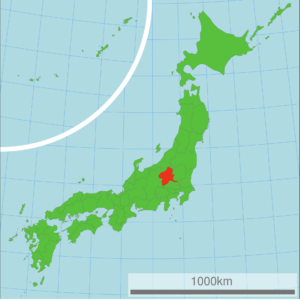
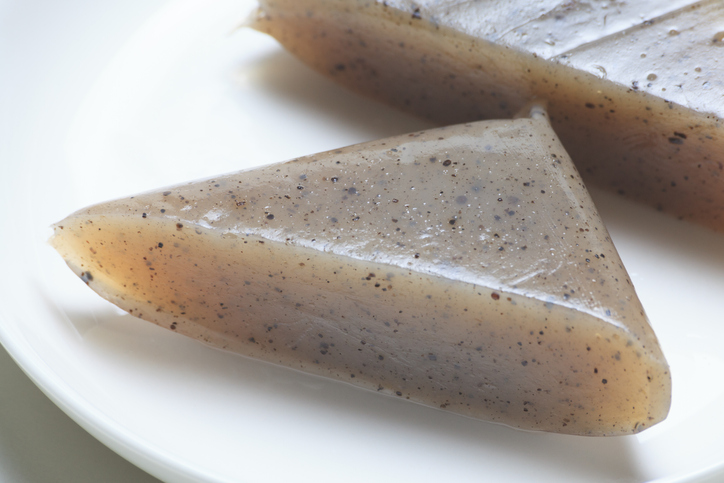
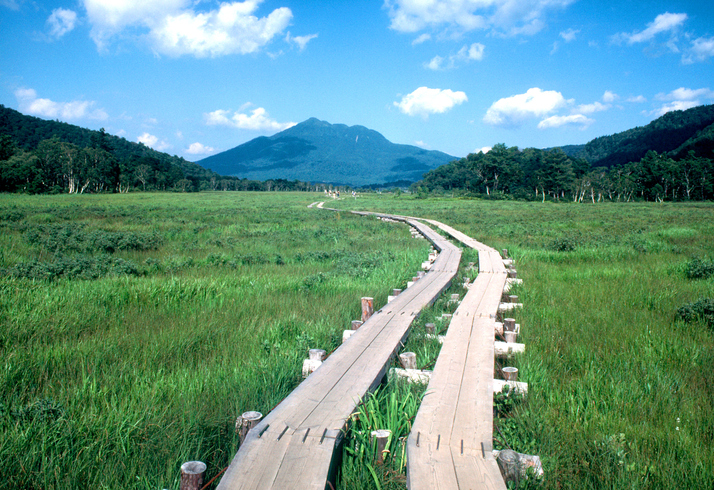
Tour of Ryujin Shuzo:
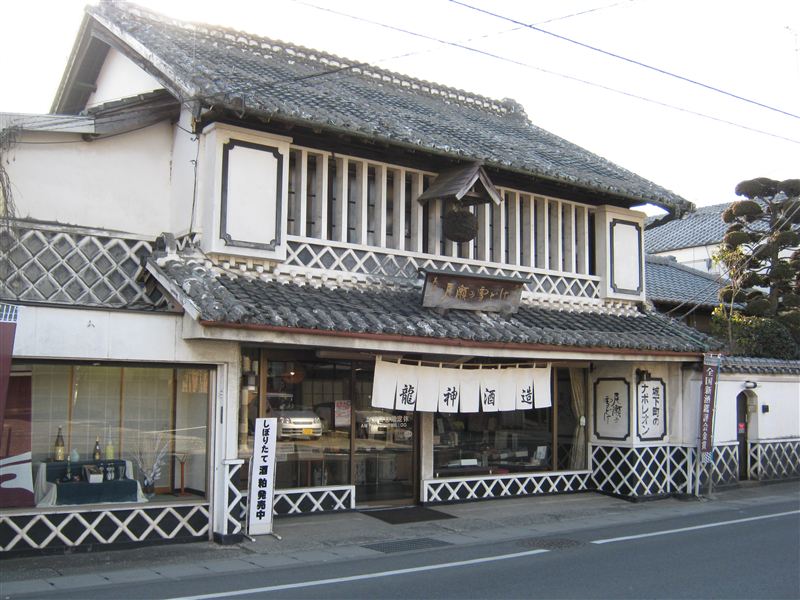
Skip to: 21:01 Sake Introduction and Tasting: Oze No Yukidoke Omachi Junmai Ginjo
Oze No Yukidoke Omachi Junmai Ginjo
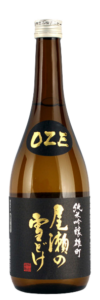
Alcohol: 16.5%
Classification: Junmai Ginjo
Prefecture: Gunma
SMV: +3.0
Acidity: 1.5
Brewery: Ryujin Shuzo
Seimaibuai: 55%
Brand: Oze No Yukidoke (尾瀬の雪どけ)
Importer/Distributor: Mutual Trading (USA)
Rice Type: Omachi
Skip to: 32:26 Show Closing
This is it! Join us next time for another episode of Sake Revolution!
Support us on Patreon
 Now there is a new way to support Sake Revolution. Join us on Patreon! Patreon is an online platform that allows you to support your favorite creators by subscribing to a monthly membership. At Sake Revolution, we’re offering two tiers, each with its own perk. If you enjoy our sake podcast, if you are able, please consider supporting this labor of sake love! See below to learn about our Patreon support levels.
Now there is a new way to support Sake Revolution. Join us on Patreon! Patreon is an online platform that allows you to support your favorite creators by subscribing to a monthly membership. At Sake Revolution, we’re offering two tiers, each with its own perk. If you enjoy our sake podcast, if you are able, please consider supporting this labor of sake love! See below to learn about our Patreon support levels.
-
Sake Enthusiast
Have you ever wanted to sip along with us as we taste our sakes on the podcast? Now you can! As a Sake Enthusiast patron, you’ll get the inside track and know in advance which sakes we’ll be featuring on the show. This allows you to get them on hand and sip along with us while you listen.
-
Sake Otaku
As a Sake Otaku supporter of the pod, you’ll get access to all the Sake Enthusiast intel along with access to a monthly live zoom Sake Happy Hour taking place the first Weds of every month at 9pm ET (6pm PT). Visit with us live on zoom! Come with all your questions and suggestions and enjoy a relaxed and fun Happy Hour with with us as we all sip sake together!
Episode 149 Transcript
John Puma: 0:21
Hello everybody and welcome to Sake Revolution.This is America’s very first sake podcast and I am your host,John Puma.I am from the Sake Notes.I’m also the administrator over at the Internet Sake Discord and the lead mod in Reddits r slash sake community.
Timothy Sullivan: 0:41
And I’m your host,Timothy Sullivan.I’m a Sake Samurai.I’m a sake educator,as well as the founder of the Urban Sake website.And every week John and I will be here tasting and chatting about all things sake and doing our best to make it fun and easy to understand.
John Puma: 0:58
Hey Tim.Welcome back to another,uh,another fun week of,uh,of talking Sake.
Timothy Sullivan: 1:03
How you doing?
John Puma: 1:05
I’m,I’m doing good.I’m doing good.I’m a little excited about this week because I feel like we haven’t done,we haven’t done this theme in a while.This,um,this topic.
Timothy Sullivan: 1:17
what theme would that be?
John Puma: 1:19
Prefectures.
Timothy Sullivan: 1:20
Prefectures.
John Puma: 1:22
on a prefectures.Yeah.
Timothy Sullivan: 1:24
Now
John Puma: 1:25
say deep dive for,for litigation purposes.
Timothy Sullivan: 1:27
for legal reasons,
John Puma: 1:29
For legal reasons.
Timothy Sullivan: 1:30
see my lawyer.
John Puma: 1:31
Yeah,yeah,yeah.Yeah.We’re gonna touch on,uh,some Prefecture chit-chat today.I think it’s been a little bit,I think that talking about Prefecture is a lot of fun,especially these days.I want to say that when we were doing a lot of our first bunch of episodes.It was a little bittersweet to be talking about prefectures because we couldn’t go to any of them.But now Japan is back open.Tourism is ramping up.I hear it’s up to66%of its pre pandemic levels,so we’re getting there and.I don’t know about you,but I’m thinking about where I’m gonna go when next time,the next time I go to Japan,I’m wondering like,what prefectures am I gonna visit?And so I’m gonna use this,uh,this episode as an opportunity to,to kind of scope out potential options.
Timothy Sullivan: 2:19
Well,it is my New Year’s resolution to get to Japan this year.
John Puma: 2:25
Yeah,it is.
Timothy Sullivan: 2:26
can I,uh,jog your memory on that?
John Puma: 2:28
Yeah.Yeah.No,I remember.And,and I,and I,Tim,I think it’s,it’s so gonna happen that I’m not even
Timothy Sullivan: 2:35
Okay.You’re not worried.Okay.I’m,I’m still thinking about it.
John Puma: 2:37
it’s gonna happen.I,I just know it’s gonna happen.
Timothy Sullivan: 2:40
I’m still thinking about my options about where to go in Japan for sure.So,uh,tell me,John,where of the47prefectures in Japan?Where are we headed today to talk about sake?
John Puma: 2:53
All right.Today we’re gonna talk about the sake of a Prefecture that I’ve had some really good sake from,
Timothy Sullivan: 3:01
You can’t argue with that.
John Puma: 3:05
Uh,and it,it’s actually,um,I took a train through this Prefecture once.
Timothy Sullivan: 3:10
Okay.
John Puma: 3:11
Even stopped briefly.And by that I mean the train stopped because other people had to get,it was a stop on the train,uh,I was actually on the way to see you uh,in,in2017in,uh,Niigata.Uh,and so on the way to Niigata from Tokyo,you passed through Gunma yes,Gunma.
Timothy Sullivan: 3:31
So we are going to be talking about Gunma today and astute listeners from way back in the day are going to know that we did touch on Gunma in episode eight,when we had Chris Johnson on the show.But today,we’re going to take a little bit of a deeper dive.And as you mentioned to get from Tokyo to Niigata,you do pass through Gunma and there is a very long tunnel.I think currently it’s the second longest tunnel in Japan that goes,uh,from the mountains of Gunma Through to Niigata.And it was a modern marvel when this tunnel was built,and I’ve gone through that tunnel many times.So I’ve traveled through Gunma,but I have never stopped there myself.So we’re both gonna be.Talking about Gunma without having been there,but we’ve had plenty of sake from Gunma,haven’t we?
John Puma: 4:21
Yes,we have.And and I have to say though,when you take a train through Gunma,you don’t get to see a lot of Gunma,as you pointed out.You just see a lot of the interior of a cave.
Timothy Sullivan: 4:29
You see Gunma from the inside.
John Puma: 4:31
Yeah.Yes.Wow.The rock is really solid and over us.
Timothy Sullivan: 4:39
Well,we should,we should orient people a little bit.So Gunma is basically a little bit north and a little bit west of Tokyo.So if you were to travel across the main island of Japan towards the sea of Japan,away from the Pacific,Towards Korea,you’re gonna cross crisscross the main island,and Gunma is a landlocked Prefecture.That is right dead center in the main island of Japan.
John Puma: 5:08
Hmm.Okay.That is absolutely right.That,that,that tracks up my notes too,Tim.
Timothy Sullivan: 5:15
All right,
John Puma: 5:17
So,so what do you have to do in Gunma?What,what,what’s there Apart from the sake,because we know the sake.
Timothy Sullivan: 5:23
Well,I know that there’s some beautiful national parks.Uh,there’s mountains in Gumma as well,for sure.Uh,there’s the start of the second longest tunnel in Japan is in Gunma.
John Puma: 5:35
Yes.there’s,uh,Onsen,Onsen towns.
Timothy Sullivan: 5:39
yes.And you’ll notice I mentioned it’s a landlocked region,so it’s one of a handful of prefectures in Japan that do not have direct access to the sea or the ocean.So I think that has a little bit of an impact on the famous foods from this Prefecture.And when we do these Prefecture profiles we do talk about what some of the famous foods are from these regions,and I think that’s interesting cuz there’s always like a tie in with sake pairing,but it’s also really influenced by their geographic location.Gunma has no access to the sea or the ocean,so their most famous foods are not.Related to fish that come from the ocean,which is very common in Japan.So one very famous food,I’m not sure if you’ve ever had it,John is”konnyaku”Have you ever heard of this?Have you ever tried this?
John Puma: 6:34
uh,
Timothy Sullivan: 6:35
You’re,you’re,you’re,you’re groaning.
John Puma: 6:38
I’m groaning.I am groaning because I’ve.I have,um,some issues with texture.I’m very texture sensitive when it comes to foods and,uh,yeah,the Konnyaku is very gelatinous.And,um,it’s,I don’t,I don’t like the way it jiggles,uh,it’s also a really unappealing shade of gray,which I don’t love.
Timothy Sullivan: 7:08
Well,Konnyaku,for those who don’t know it is a Yam or a taro Root,and it is a gelatinous.Thing that is often known in English as a yam cake,and it’s in Japan,it’s really well known as a diet food because you actually burn more calories digesting konnyaku than are in konnyaku.And it,it,it’s something like tofu in a way that kind of absorbs.Whatever flavors you mix it in with.So if you mix it in with a soy sauce,it’s gonna take on soy sauce flavors.If you mix it in with some other kind of curry thing,it’s gonna take on curry flavors.So it’s kind of this super neutral gelatinous food and it’s,it’s used in,in many,many types of dishes in Japan,but it does have that certain texture to it.You’re absolutely right.
John Puma: 8:03
Yeah.Uh,it’s a shame that,uh,it’s a shame that I’m so sensitive to the textures because,um,I could stand to lose a few pounds.Damn.I’m not gonna lie.So,diet food sounds like a good idea.I just wish I wasn’t so damned sensitive to texture.
Timothy Sullivan: 8:17
Well,let’s just move on from Konnyaku.I don’t think that’s anybody’s favorite,but it is.It is famous from,Gunma.Another dish that’s very famous is something that I actually don’t know.Okkirikomi.Okkirikomi.Yeah,this is a hot pot dish.It’s a wide udon noodle with seasonal vegetables and a seasoned broth like a soy sauce or a miso broth.So it’s basically like a chicken noodle soup on Japanese steroids,I think is the way you can describe it.
John Puma: 8:54
I could see that.if you Google these noodles,they,they are so wide and flat,they look so much like,um,like I’ve had some,uh,some Italian noodles that are very similar to this.Uh,also some Thai noodles have a very,like,uh,I think the,the noodles you would see in like a drunken noodle.They use that real wide noodles like this.I don’t know if they made it the same thing,but it’s interesting,the very,uh,I,I’d give this a shot.This seems like something that looks like it’d be kind of delicious.
Timothy Sullivan: 9:22
heck yeah.Yeah,it sounds fabulous.And this sounds like the classic mountain food of Japan.You know,when it’s cold in the winter and you want something warm and filling and Konnyaku is not cutting it.I think Okkirikomi is the type of,hot noodle soup that you’re gonna want in the winter.
John Puma: 9:44
Hmm.Yeah.Yeah.I mean we’re,we’re,we’re creeping in on summertime here in New York,but I can go for some of this right now.This looks good.definitely something I will try if I ever find myself in Gunma.
Timothy Sullivan: 9:57
Yes.Which we,we have to,after this episode.We can’t show our faces in the tunnel if we don’t visit
John Puma: 10:02
Gunma in the tunnel.
Timothy Sullivan: 10:05
Now let’s,let’s get back to sake for a second.So do you
John Puma: 10:08
Let’s get back to sake.
Timothy Sullivan: 10:09
Do you want to take a guess how many sake breweries there are in Gunma?Now let’s remind our listeners that the most sake breweries in one Prefecture is Niigata.Niigata wins about90sake breweries.Some say88,some say89.Um,I usually
John Puma: 10:29
interesting how people are not in agreement on that.
Timothy Sullivan: 10:31
Yeah,I mean,it,it,there’s,there’s a little bit of flex because some.Breweries hold a license,but they don’t produce much real sake and they’re holding onto their license.So do you count them?Do you not count them,but let’s just say roughly90breweries,in Niigata,that’s the largest number of breweries in one Prefecture.And there’s a few prefectures we know of that have like one license registered
John Puma: 10:55
Yeah.
Timothy Sullivan: 10:56
like,um,Okinawa,for example,has1brewery registered.So between one and90,uh,how many?One and90.
John Puma: 11:05
that’s gonna be my bet.So,so here’s what I’m gonna do.I’m gonna,I’m looking at a map of Gunma right now.I’m,I’m looking at map of Japan really,and I’m looking at Niigata and I’m seeing that Niigata is quite large,actually.Gunma a much smaller.Not,not not tiny,but,but smaller.I’m also taking into account that I know that Gunma has a great deal of mountains and you can’t exactly brew sake on the mountain.So I’m taking a look at more of the flatter lands and there’s not a ton.So I’m thinking,you know,maybe something like I,I,I’m gonna say15or something like that.
Timothy Sullivan: 11:42
Hmm.Not close.
John Puma: 11:46
not close,damn.Well,you know,I would’ve,I would’ve looked it up,but that would’ve been cheating.
Timothy Sullivan: 11:52
The approximate count is around26,give or take a few again,based
John Puma: 11:57
Hey,that’s not too bad.
Timothy Sullivan: 11:58
Not too bad.Not too bad.
John Puma: 12:00
Within11.Within11.
Timothy Sullivan: 12:03
Yeah.So about about,uh,roughly26breweries in Gunma,which I think for the size of the Prefecture,that is actually a pretty good number of breweries.
John Puma: 12:14
Yeah,it is a pretty good number.I think in my mind it’s,uh,it’s not bad.
Timothy Sullivan: 12:19
Yeah.
John Puma: 12:20
I’m really trying to save face here,Tim.now I’m trying to think of how many sake breweries I know off the top of my head that are in Gunma,and I think there’s only two.
Timothy Sullivan: 12:33
What are the two that you know.
John Puma: 12:34
So,uh,I’m gonna,uh,I don’t wanna bury the lead here,but the sake we’re gonna be tasting today,is from one of them.Uh,obviously I’ve heard of it and bottles in front of me.And that is some Ryujin Shuzo,and they make the Oze no Yukidoke brand,which is,you know,very famous.And,and we see that a lot in New York.And the other the brand is a Mizubasho.
Timothy Sullivan: 12:55
Hmm.
John Puma: 12:56
the name of the brewery is a Nagai Brewery.That’s a brand.I,I actually,really enjoy their sake as well.their stuff makes it over to the states,uh,as well.But I don’t know too many others that make it over to the U.S..
Timothy Sullivan: 13:08
Yeah,there’s a,there’s a couple more that I know of.Um,one is Called Akagisan
John Puma: 13:15
Mm-hmm.
Timothy Sullivan: 13:16
That’s from Condo Shuzo out of Gunma.And there’s one other,say Toku.
John Puma: 13:24
Say Toku.Oh,okay.
Timothy Sullivan: 13:27
And they’re distributed in the US as well,so I think there’s,I really am familiar with four brands that connect with Gunma.
John Puma: 13:36
Mm-hmm.That’s excellent,right?
Timothy Sullivan: 13:39
You know,John you were talking about some of those breweries that we know that export to the US from Gunma,and you did mention right away Mizuho brand,which is Nagai Shuzo,and last year they launched something.They’re part of a project that I think is pretty important for Gunma sake.Prefecture launched its first geographical indication or gi
John Puma: 14:08
Hmm.
Timothy Sullivan: 14:08
and that started January17th,2022.So this is a year and a half ago.But a Prefecture launching a GI is a pretty big deal.The GI that they launched is called Tone-Numata,and it.Consists of four breweries in the Tone-Numata area of Gunma Prefecture.So it’s a geographical area.And the rules for being a part of this gi or this kind of regional indication is that they must use,local water and that the rice that they use for their sake must be Yuki Hotaka.
John Puma: 14:52
Mm-hmm.Gohyakymangoku,or Koshihikari,
Timothy Sullivan: 14:55
so one of those three rices grown locally and a yeast must be Gunma Kaze yeast Gunma G-2yeast or a brewer’s house yeast from one of the four breweries.So there’s a limited number of local rice,a limited number of local yeast.And this is kind of the first regional geographical indication dedicated to Gunma.
John Puma: 15:23
Hmm.
Timothy Sullivan: 15:24
So that brings up the question,what do you know about gis?What do you think about GIS as a man on man on the street perspective?
John Puma: 15:32
um,my,my understanding,uh,of GIS is that they,is that not all GIS are created equal.Uh,um,I’ve definitely seen that a given Prefecture when they do their gi they can have different rules depending on what the group agrees to.Uh,so this one seems to be very strict.
Timothy Sullivan: 15:53
yes.
John Puma: 15:53
this may be the strictest GI I’ve ever,uh,I’ve ever seen.Especially since it seems to be hyper localized,this small area.It’s very,very interesting.I like that.But yeah,this one definitely seems to be a lot more specific,uh,with the rice types or calling for specific yeast or house yeast for those very few breweries that are involved.I think that their GI.To me,it seems like it means more because there’s so many,so many rules attached to it,so many,restrictions.
Timothy Sullivan: 16:22
Yeah,I’m kind of of two minds about GIS in Japan.
John Puma: 16:27
Mm-hmm.
Timothy Sullivan: 16:28
On the one hand,I feel like they’re chasing some kind of ideal from the wine world.Like if it’s not,if it’s not made in the Champagne region of France,you can’t call it Champagne kind of thing.And that has great value for the people within Champagne.And I think a lot of regions in Japan are chasing that idea.And a,a number of prefectures now have gis,Niigata has one and.Different,smaller regions have GIS as well,and there’s a GI dedicated to Nihonshu for the whole country,like nihonshu,which we call sake.In the west,that’s a protected term under a national gi.
John Puma: 17:09
Right.
Timothy Sullivan: 17:10
So it feels a little bit like too much.I don’t if too
John Puma: 17:18
I understand what you’re saying by the way.I totally get it.
Timothy Sullivan: 17:21
if too many people do it,then does it still have value,you know,if,if it brings value and can be promoted properly,I think there,there’s a reason to do it,
John Puma: 17:35
Mm-hmm.I don’t think there’s any harm in it.If they wanna do something special,especially if it’s a small group of breweries and they want to have kind of,they wanna raise their profile a bit and.Do something with a common,I’m assuming a common,flavor profile of some sort.You know,they’re going for a specific,style and they’re all gonna abide by it and,and show what these very specific rices,these very specific yeast,these very specific breweries can do.I don’t think there’s too much of a harm in that,thinking of like the GI Yamagata,which has actually quite loose rules compared to this.Yamagata whether by,you know,by design or by accident does have a style to that.Like a lot of the sake that comes out of there has a,a,a very similar vibe to it.And so when you see that,you kind of know a little bit about what you’re getting.Now,you know,you’re getting yamagata sake,which if you know how to look at the label and find that says Yamagata is helpful.But the big sticker that says GI Yamagata is easier to see than that.Uh,so,you know,it just,I think it’s,I think it’s something that could potentially.Help people who are new to sake,but as you are pointing out with regard to like the champagne and some other stuff,it can also be very restrictive in a detrimental way.
Timothy Sullivan: 18:48
Yeah,imagine if like you picked up a bagel in the store and it said This is GI New York City bagel.
John Puma: 18:57
You’re ma Tim,you’re supposed to be talking me out of it.
Timothy Sullivan: 19:01
This has to be made with New York City water,with this amount of calcium and this amount of blah,blah,blah.And you know,do you,
John Puma: 19:09
It’s still sounded good.
Timothy Sullivan: 19:09
sounding good.Okay.Well maybe that settles
John Puma: 19:12
Well,New York bagels are special,so is a bad example.
Timothy Sullivan: 19:20
Yeah,
John Puma: 19:21
Have you had bagels outside of New York,
Timothy Sullivan: 19:23
oh,I have,they’re horrible.Sorry,America,we’re
John Puma: 19:28
It’s
Timothy Sullivan: 19:28
biased.
John Puma: 19:30
so,you know,uh,you know,you’re trying to,are you trying,you’re trying to sell me on it?Like,
Timothy Sullivan: 19:35
No,I,I
John Puma: 19:36
cause it sounds like a great idea.
Timothy Sullivan: 19:38
Well,I just think that they need to,people need to be,um,measured with starting gis,and I think there should be some like that.Maybe the bagel is a good example.Like people say that New York City bagels and pizza are so good because of the Catskill.Water source that we have,it has a special amount of minerals in it,and that gives our baked goods here in New York a certain and that might be a good argument for a gi,but then if you just say,oh,any water source in the country can be its own gi,I think there has to be something really famous and special about it to make it newsworthy.
John Puma: 20:21
I think we can come to an
Timothy Sullivan: 20:23
Okay.
John Puma: 20:23
there.That sounds,I feel exactly the same,which is why when you used New York Bagels as an example,I was like,well,wait a minute.Like nobody else makes bagels this good.
Timothy Sullivan: 20:35
Oh,the letters we’re gonna get in the mail bag.So John,I think,I think you and I,we mentioned a few breweries that we.Know and Love from Gunma,but there’s one that is really well distributed in the US and you mentioned earlier which one we’re gonna taste.So why don’t you give us a little intro to the sake we’re tasting,and then we can talk about this brewery.
John Puma: 21:01
Absolutely Tim.So,today we are gonna taste.A that I’m a really big fan of,in fact,this brand,this brewery,everything they make,it’s one of those things I,I find out they have something new in town.I’ve gotta taste it immediately.It’s one of those,one of those breweries.I trust to make fantastic sake and they never let me down.So,Ryujin Shuzo and the Ryujin means,uh,dragon God,which is actually also another,they use that name as a brand itself,which is wonderful sake as well.and then the,their,their mainline brand is the Oze,no Yuki Doke.Uh,and we’re gonna be tasting the Oze no Yukidoke Junmai Ginjo Omachi.So right up my alley Omachi right there.Junmai.Ginjo,right?Mm mm Exciting stuff.So,the rice top here is Oma.Of course,the milling percentage is55%of a original size sake meter value,plus five.The,acidity is1.5ABV is17.And the yeast is actually,uh,number nine.And a fun fact,Tim,uh,Ryujin Shuzo was founded in1597.Wow.
Timothy Sullivan: 22:13
So not that old.
John Puma: 22:14
Not that old.No,not at all.No,they’re,they’re that1597.That’s insane.
Timothy Sullivan: 22:20
That is insane
John Puma: 22:22
Yeah.Uh,yeah.They’ve been doing this for a little while,I guess.
Timothy Sullivan: 22:27
Yeah.So.The water source I think is really central to their brand and their brand is Oze no Yukidoke and Oze.We discovered when we looked it up is I think a national park in Gunma.Is that right?
John Puma: 22:45
That is correct.In,uh,Northern Gunma.
Timothy Sullivan: 22:48
Okay.And Yuki Doke is like,means snow melt.So I think we were talking about,you know,the Catskill water source for New York City Bagels.I think that the Oze National Park is the water source for the Oze.No Yuki doke sake.Like this is the,Beginnings of the sake is from this park and this nature preserve that provides this beautiful snow melt water for,uh,Ryujin Shuzo
John Puma: 23:19
Mm-hmm.Mm-hmm.And it’s been noted,uh,in some of my research on this that it’s a soft water,
Timothy Sullivan: 23:24
yeah,so there’s a myth behind the name of Ryujin So as you mentioned,RYU is dragon and JIN kind of means Divineness or God.And there is a water well on the property.And it said that it,a divine dragon flew out of the well and they decided to start bring sake with the water from this dragon.Well,and they produced very delicious sake from this water.So that is the origin of the sake.And I’ve heard from people at the brewery that there is a,dragon statue on the well,and there’s a little.Marble ball that spins with the water gurgling up.And they have a kind of a,a,a figure of a dragon at the well source to remember this myth,this legend of the dragon coming out of the well and kind of blessing the water.So it’s really cool.And the,the other thing I know about Ryujin Shuzo is that there’s a very small number of brewers.
John Puma: 24:34
Yeah,I,I’ve heard that it’s like,it’s,it’s almost in,in our circles.It’s kind of like legendarily small.I think it’s what it’s like five people,six people,something like
Timothy Sullivan: 24:43
I think you’re right,John.They have,uh,six brewers,but I know that,yeah,I know that two of them have the qualifications to be Toji or a master brewer,
John Puma: 24:54
Two outta six.
Timothy Sullivan: 24:56
outta six,so that,that,really speaks to the quality that they can produce when,you know,a number of the brewers have this Toji level qualification.So that’s,that’s just amazing.And,uh,the other thing I wanna say about the Oze,no Yuki Doke brand is that,you know,we,we featured Kinoene on the brand where we talked about the apple sake a few episodes ago.And,I think that similar to their brand,Oze produces sakes that come in in a pretty affordable price for their quality.That’s what I think I,what do you,what do you think about
John Puma: 25:33
I agree a hundred percent.
Timothy Sullivan: 25:35
Yeah,I just,whenever I pick up their bottle to buy it,I always feel like this is a good value for the,like,the quality is always primo and for the cost.It’s not over the top and.I,I have this feeling they really strive to make affordable sakes for distribution broadly.And even though they’re a small brewery with only six brewers,they focus on export to the US So they,they have their eyes on the bigger picture as far as getting their sake around the world,which I really admire.
John Puma: 26:08
Yeah.
Timothy Sullivan: 26:09
And uh,I think it’s time for us to get this in the glass.
John Puma: 26:12
Alrighty.while we open up,I’ll mention that,traditionally the Ryujin Shuzo products tend to come in these,uh,UV protective bags that make wonderful noise when you’re trying to do a podcast and you’re taking them out.it is important to.Keep UV rays away from sake,and they go the extra mile by making sure that they pack them all in these bags.
Timothy Sullivan: 26:37
Okay.Well let’s listen to this sound.All right,so this has a little bit of a higher alcohol.Uh,we,I think we said17%
John Puma: 26:52
just a touch.Yeah.A little bit.And,Hmm,that is,that is some Omachi aroma
Timothy Sullivan: 27:01
Yep.It has it.It has a little bit of earthiness.A little bit of rustiness,but it’s very gentle.
John Puma: 27:10
Little earthy little rice and then,like a,a fr,you know,a fruit as well.Almost like a,almost like a cherry note on the nose
Timothy Sullivan: 27:17
Yeah.
John Puma: 27:18
like a almost.jammy.
Timothy Sullivan: 27:20
To me,it almost smells like a,you know when you’re making apple pie and you peel all the apples and then you,if you smell the apple skins,it kind of smells like that
John Puma: 27:29
Okay.Okay.I can,I can get down with that.
Timothy Sullivan: 27:34
All
John Puma: 27:34
All right,let’s give it a taste.
Timothy Sullivan: 27:39
Hmm.Okay.John,I,I gotta give you props.There’s,there’s a little note of cherry on the,the palate.It is there.
John Puma: 27:48
It’s something I always think of with,there’s a,like a subset of,omachi sakes that have this note to it,this little cherry note to it.And I,this definitely fits right in there for,me and I,Hmm,big fan,big fan.And I,it’s a,it’s just a great,it’s a great note to have in your sake.I think it’s wonderful.
Timothy Sullivan: 28:08
Yep.I think that the sake overall is really balanced.
John Puma: 28:14
Mm-hmm.
Timothy Sullivan: 28:15
I see why they,in my opinion,why they raised the alcohol up a little bit.I think if the alcohol was lower,I.The sweetness or the candied note might overpower a little bit and might taste almost medicinal,like,uh,coughs syrup up kind of hint.But the,the alcohol is there to balance out that jammy sweetness and the earthiness gives it just a hint of bitterness on the finish.That is really nice.Very grounded sake,nice and round,not sharp in any way.A very mild acidity too.Uh,1.5,which is right in the middle of our zone.And the yeast,yeast number nine,uh,which is known to lend fruity characteristics to sake.Uh,and just,just enough omachi earthiness to.Round out everything,so all the pieces really fall together well for this sake.
John Puma: 29:18
it does.It does.And I think that you nailed it with your,your commentary that,that,the alcohol is,is kind of.Tapering the,uh,the,the jammy-ness.Cause I think that that jammy-ness is there and it I think it’s exactly where it needs to be,but I th when you were talking about that,I’m thinking about what would happen if I took the jamus up a notch and it,and it would become uncomfortable.It would become really thick and cloying.
Timothy Sullivan: 29:41
Yes.
John Puma: 29:42
This is a definitely a drink.This on the couch,Santa sake for John Puma,let me tell you that.
Timothy Sullivan: 29:48
I believe it.
John Puma: 29:49
What do you think about for food Here I need the,I need the,uh,the Tim Sullivan answer.
Timothy Sullivan: 29:54
Oh,no,the pressure’s on.Well,the.Omachi opens up for me worlds of pairing that we don’t usually look at with other sakes as often.And so I’m thinking about,believe it or not,something with a little bit of umami earthiness to it.Like,uh,I know you’re picky about some foods,jp,but uh,how do you feel about mushrooms?
John Puma: 30:17
Um,they’re,they’re a big no for me.
Timothy Sullivan: 30:19
Oh no.
John Puma: 30:20
Yeah.
Timothy Sullivan: 30:22
Well,we talked about pizza and bagels earlier,and I just had some really good New York City pizza with,mushrooms on it,and oh my gosh,it was the perfect combination of like a little bit of lactic note and a little bit of that umami from the,from the mushrooms and that.Catskills water in the crust.It was,it was deserved a GI certification.It was so good.So I’m thinking like,if I had a sip of this with this super delicious umami New York City mushroom pizza,I would’ve been in hog heaven.So that’s just something I ate recently and that just popped to mind.And I think that would be really good.for context,I’m looking for something with just a,a,a hint of that.Savory umami characteristic.It can come from miso,it can come from tomatoes,it can come from Parmesan cheese,it can come from mushrooms.But that,that umami note is something I would look for.
John Puma: 31:21
what if I took some cod and I,I took,uh,some miso and I applied it generously and then gave it some time in the oven.And then,and do you think I’m gonna get enough umami there to,to make this work for me?
Timothy Sullivan: 31:34
Totally.Yes.
John Puma: 31:35
good.so we’ve got some in the freezer.I’ve been dreaming of doing that one,
Timothy Sullivan: 31:38
Yeah.Miso,
John Puma: 31:40
I think that’ll happen soon.Me So cod?
Timothy Sullivan: 31:42
cod is a classic,
John Puma: 31:44
Mm.
Timothy Sullivan: 31:44
dish that features Umami flavors and
John Puma: 31:47
Yeah.
Timothy Sullivan: 31:48
I think that would be a plus with this.All right.Well,I think even though you and I have never been there,we’ve had a successful trip
John Puma: 31:58
Hmm.
Timothy Sullivan: 31:59
on,we’ve had a successful trip to Gunma
John Puma: 32:04
through our glass yeah.And I will tell you,Tim,it is on my shortlist as possible destinations for this year’s,uh,trip to Japan.It’s,it is a place I may spend a few nights.
Timothy Sullivan: 32:13
Wow.Well you’ll have to come back to the pod with a full report and we’ll have to feature another one of the great brands from Gunma.
John Puma: 32:23
Hmm.That sounds like fun to me.
Timothy Sullivan: 32:26
Alright,well John,it was great to taste with you.Great to visit.Gunma in spirit.And,uh,I wanna thank our listeners so much for tuning in again this week.Uh,we’re so happy to have you listening and we hope you’re enjoying sake with us.A special hello and thank you to all of our patrons.Without you,we couldn’t make Sake Revolution happen,so we’re so grateful.And if you would like to learn more about supporting Sake Revolution,Please visit Patreon.com/SakeRevolution to learn more.
John Puma: 33:01
And another way that you can support our show is by giving us a nice review over at Apple Podcast or on your podcast platform of choice.
Timothy Sullivan: 33:10
And be sure to check out our website sake revolution.com to see our show notes.Learn a little bit about Gunma.And always feel free to send us a message at [email protected]
John Puma: 33:22
Yeah.Have you been to Gumma?Maybe you can help me choose where to go,but anyway,please raise a glass.Remember to keep drinking sake from Guba and other places,and
Timothy Sullivan: 33:35
Kanpai.